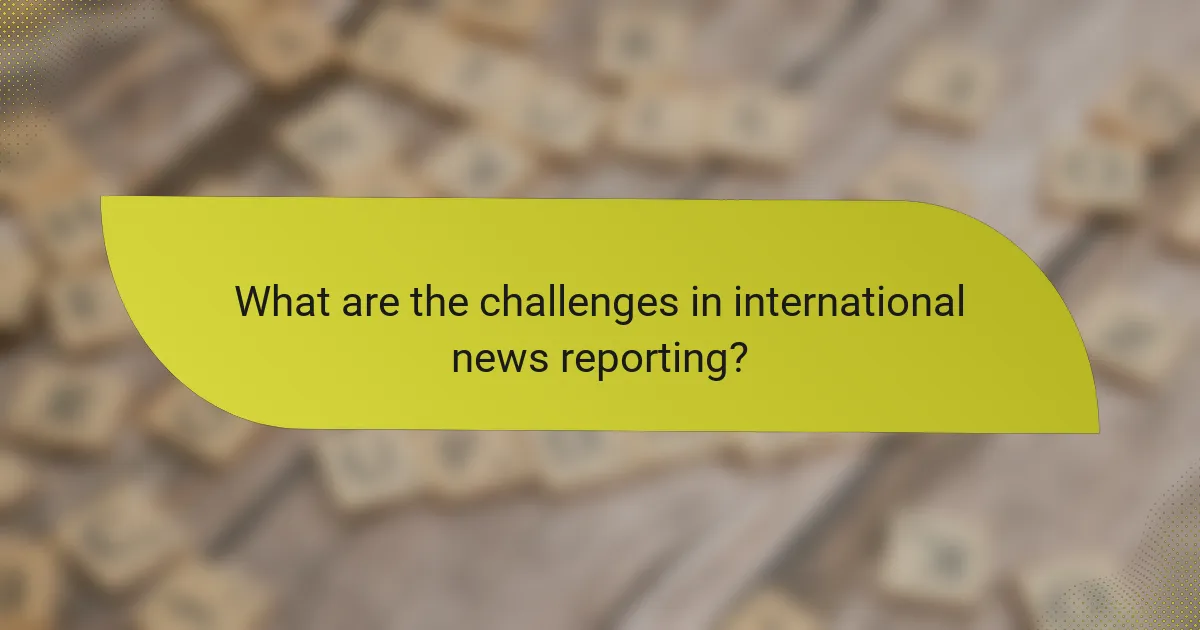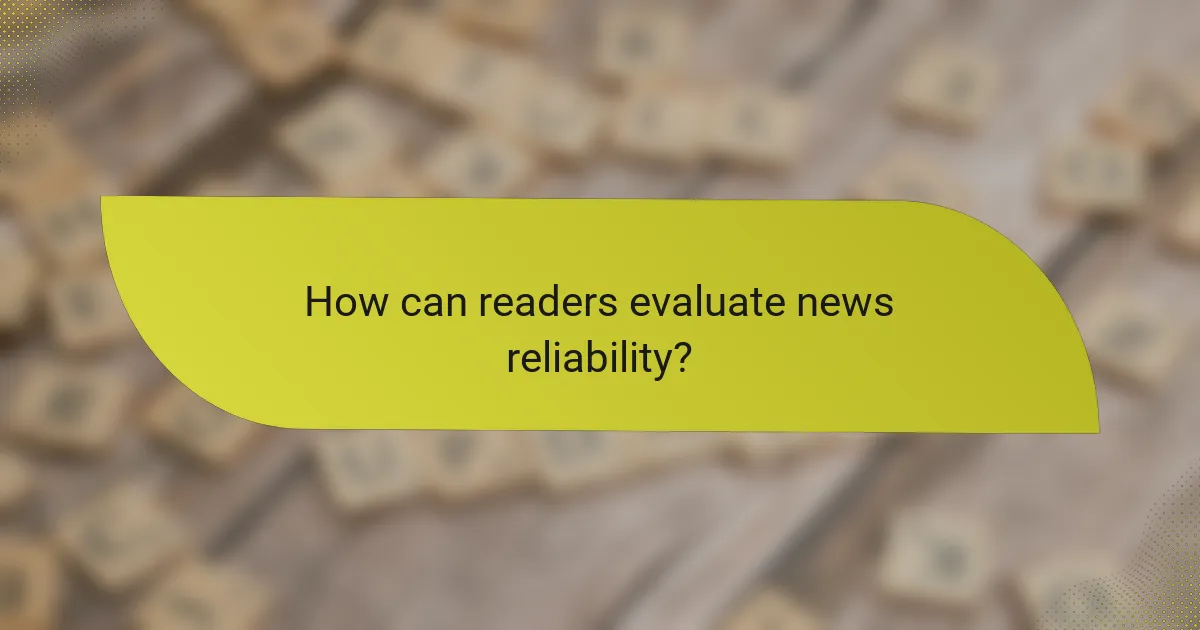In today’s fast-paced world, staying informed through reliable news sources is essential. International outlets like The Guardian, BBC News, Al Jazeera, CNN International, and Reuters offer diverse perspectives and varying coverage quality, influenced by their editorial standards and reporting focus. By understanding these differences and key metrics such as audience reach and engagement, consumers can better navigate the landscape of global news.

Which international news outlets provide the best coverage?
Several international news outlets are recognized for their high-quality coverage, including The Guardian, BBC News, Al Jazeera, CNN International, and Reuters. Each outlet has its strengths, focusing on different aspects of news reporting, which can influence the depth and perspective of the coverage they provide.
The Guardian
The Guardian is known for its in-depth analysis and investigative journalism, often focusing on social justice and environmental issues. Its coverage is particularly strong in the UK and Europe, providing a progressive viewpoint on global events.
Readers can expect comprehensive reporting on politics, culture, and international affairs, often accompanied by strong editorial pieces. The Guardian also emphasizes transparency, frequently disclosing its funding sources and editorial policies.
BBC News
BBC News is a globally recognized source that offers impartial and reliable reporting. It covers a wide range of topics, including breaking news, politics, and science, with a strong emphasis on accuracy and balance.
With correspondents stationed around the world, BBC News provides extensive international coverage, making it a go-to source for global events. Its online platform features live updates and in-depth articles, catering to a diverse audience.
Al Jazeera
Al Jazeera is known for its extensive coverage of the Middle East and developing countries, often providing perspectives that are underrepresented in Western media. Its reporting includes a mix of news, documentaries, and opinion pieces.
The outlet has gained a reputation for its fearless journalism, especially in conflict zones. Al Jazeera’s commitment to covering stories from a local perspective makes it a valuable resource for understanding complex geopolitical issues.
CNN International
CNN International focuses on breaking news and live coverage, making it a popular choice for real-time updates on global events. Its reporting spans various topics, including politics, business, and technology.
With a strong presence on social media, CNN International engages viewers with interactive content and live broadcasts. The outlet’s correspondents often provide on-the-ground reports, enhancing the immediacy of its coverage.
Reuters
Reuters is a leading source for financial and business news, known for its speed and accuracy. It provides real-time updates on market trends, economic developments, and corporate news, making it essential for investors and professionals.
In addition to business coverage, Reuters offers comprehensive reporting on global news, politics, and technology. Its commitment to factual reporting and neutrality makes it a trusted source for many news organizations worldwide.

How does coverage quality vary among news outlets?
Coverage quality among news outlets can differ significantly based on various factors, including fact-checking standards, editorial bias, and source diversity. Understanding these elements can help consumers assess the reliability and depth of information provided by different media organizations.
Fact-checking standards
Fact-checking standards are crucial for determining the accuracy of news coverage. Outlets that adhere to rigorous fact-checking protocols often provide more reliable information. For example, organizations like PolitiFact or Snopes are dedicated to verifying claims, while others may not have formal processes in place.
When evaluating a news source, consider whether they cite their sources, provide evidence for claims, and have a history of correcting errors. A strong commitment to transparency in fact-checking can indicate higher coverage quality.
Editorial bias
Editorial bias refers to the inclination of a news outlet to present information in a way that favors a particular perspective. Some outlets may lean towards liberal or conservative viewpoints, which can affect how stories are reported. Recognizing this bias is essential for consumers seeking balanced information.
To identify potential bias, examine the language used in articles, the selection of stories covered, and the diversity of opinions presented. Comparing multiple outlets can provide a more comprehensive view of an issue.
Source diversity
Source diversity involves the range of perspectives and origins from which news outlets gather information. Outlets that utilize a wide variety of sources tend to offer more nuanced coverage. This includes incorporating voices from different regions, cultures, and backgrounds.
When assessing coverage quality, look for outlets that feature expert opinions, local voices, and international perspectives. A diverse set of sources can enhance the depth and reliability of reporting, helping to paint a fuller picture of global events.

What are the key metrics for assessing news reach?
Key metrics for assessing news reach include global audience size, social media engagement, and website traffic statistics. These metrics help evaluate how effectively news outlets connect with their audience and the overall impact of their coverage.
Global audience size
Global audience size refers to the total number of individuals who consume news from a particular outlet. This metric can vary widely, with leading international news organizations often reaching millions or even billions of viewers worldwide.
To assess audience size, consider both traditional metrics like television viewership and modern metrics such as online subscriptions and app downloads. For example, a major news network might report a global audience size in the low hundreds of millions, while smaller outlets may reach tens of thousands.
Social media engagement
Social media engagement measures how audiences interact with news content on platforms like Facebook, Twitter, and Instagram. High engagement rates indicate that audiences are not only consuming but also sharing and discussing news stories.
Key indicators of social media engagement include likes, shares, comments, and overall follower growth. For instance, a news outlet that regularly posts breaking news may see engagement rates ranging from 5% to 20%, depending on the content’s relevance and timeliness.
Website traffic statistics
Website traffic statistics provide insights into how many visitors access a news outlet’s website and how they navigate through it. Metrics such as unique visitors, page views, and average time spent on the site are crucial for understanding audience behavior.
For example, a reputable news site might attract millions of unique visitors each month, with average session durations of a few minutes. Tracking these statistics helps outlets optimize their content and improve user experience, ultimately enhancing their reach.

What are the challenges in international news reporting?
International news reporting faces several significant challenges that can affect the quality and reliability of coverage. Key issues include language barriers, political censorship, and resource limitations, each impacting how news is gathered and disseminated across borders.
Language barriers
Language barriers can severely hinder effective communication in international news reporting. Journalists may struggle to accurately convey information or nuances when translating content from one language to another, leading to potential misunderstandings or misinterpretations.
To mitigate these challenges, news organizations often employ bilingual reporters or translators. However, even with these resources, subtleties in culture and context may still be lost, affecting the overall quality of the reporting.
Political censorship
Political censorship poses a major obstacle for international news outlets, particularly in countries with strict government controls over media. Journalists may face restrictions on what they can report, leading to incomplete or biased coverage of events.
In some cases, governments may block access to foreign news sources or impose penalties on journalists who report unfavorably. This creates a challenging environment for accurate reporting, as journalists must navigate these restrictions while trying to provide truthful information.
Resource limitations
Resource limitations are a common challenge in international news reporting, affecting both the quantity and quality of coverage. Many news organizations operate with tight budgets, which can restrict their ability to send reporters abroad or invest in thorough investigative journalism.
Additionally, smaller outlets may lack the technological tools needed for comprehensive reporting, such as advanced data analysis software or high-quality communication equipment. As a result, coverage may rely on wire services or aggregated content, potentially compromising originality and depth.

How can readers evaluate news reliability?
Readers can evaluate news reliability by examining the credibility of the sources and the context of the information presented. This involves checking multiple outlets and verifying facts to ensure accuracy and reduce the risk of misinformation.
Cross-referencing sources
Cross-referencing sources involves comparing information from multiple news outlets to identify consistent reporting. Reliable news is often corroborated by several reputable organizations, which helps validate the facts presented. For instance, if a major event is reported by both a well-known international outlet and a respected local news source, it is more likely to be accurate.
When cross-referencing, consider the reputation of the sources. Established outlets with a history of journalistic integrity are generally more trustworthy than lesser-known or sensationalist publications. Look for sources that adhere to recognized journalistic standards, such as the Society of Professional Journalists’ Code of Ethics.
Checking publication dates
Checking publication dates is crucial for assessing the relevance and timeliness of news articles. Information can quickly become outdated, especially in fast-moving situations like political events or natural disasters. Always verify that the news you are reading is current and not a rehash of older stories.
To ensure you are consuming the most relevant information, look for articles that provide recent updates or developments. If an article cites older events without context, it may not accurately reflect the current situation. A good practice is to check the timestamps on articles and prioritize those published within the last few hours or days, depending on the topic’s urgency.
